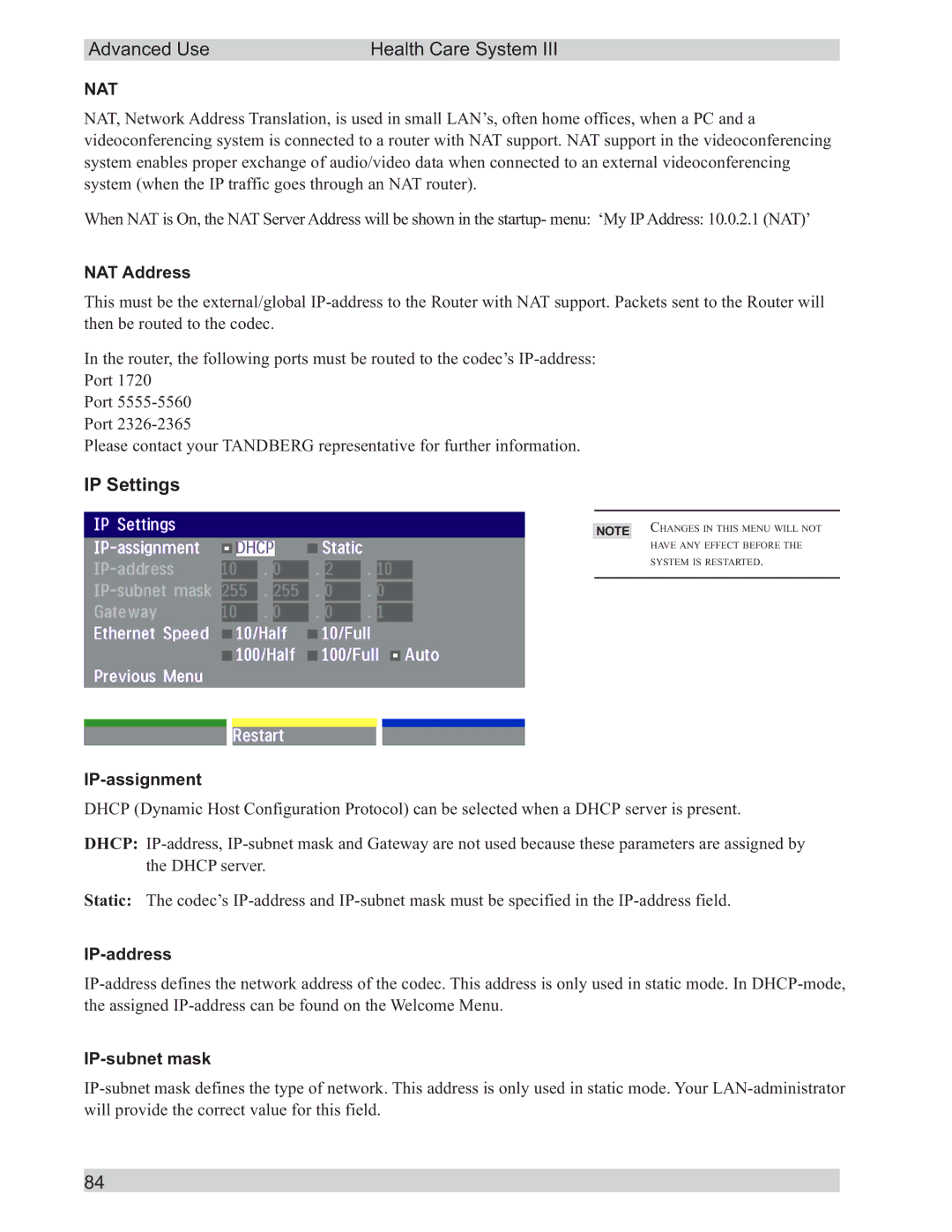
Advanced Use | Health Care System III |
NAT
NAT, Network Address Translation, is used in small LAN’s, often home offices, when a PC and a videoconferencing system is connected to a router with NAT support. NAT support in the videoconferencing system enables proper exchange of audio/video data when connected to an external videoconferencing system (when the IP traffic goes through an NAT router).
When NAT is On, the NAT Server Address will be shown in the startup- menu: ‘My IP Address: 10.0.2.1 (NAT)’
NAT Address
This must be the external/global
In the router, the following ports must be routed to the codec’s
Port 1720
Port
Port
Please contact your TANDBERG representative for further information.
IP Settings
NOTE
CHANGES IN THIS MENU WILL NOT
HAVE ANY EFFECT BEFORE THE
SYSTEM IS RESTARTED.
IP-assignment
DHCP (Dynamic Host Configuration Protocol) can be selected when a DHCP server is present.
DHCP:
Static: The codec’s
IP-address
IP-subnet mask
84
